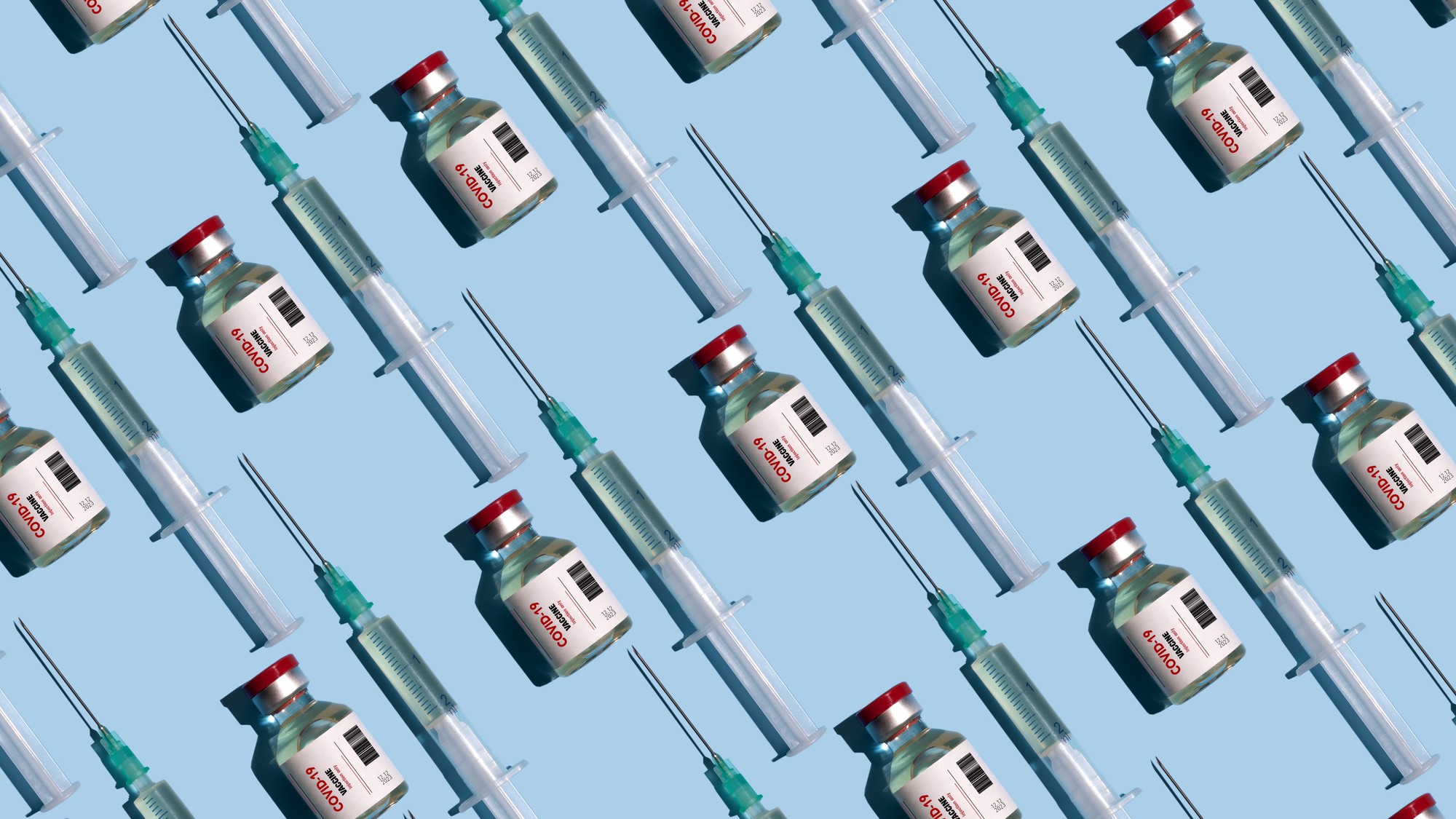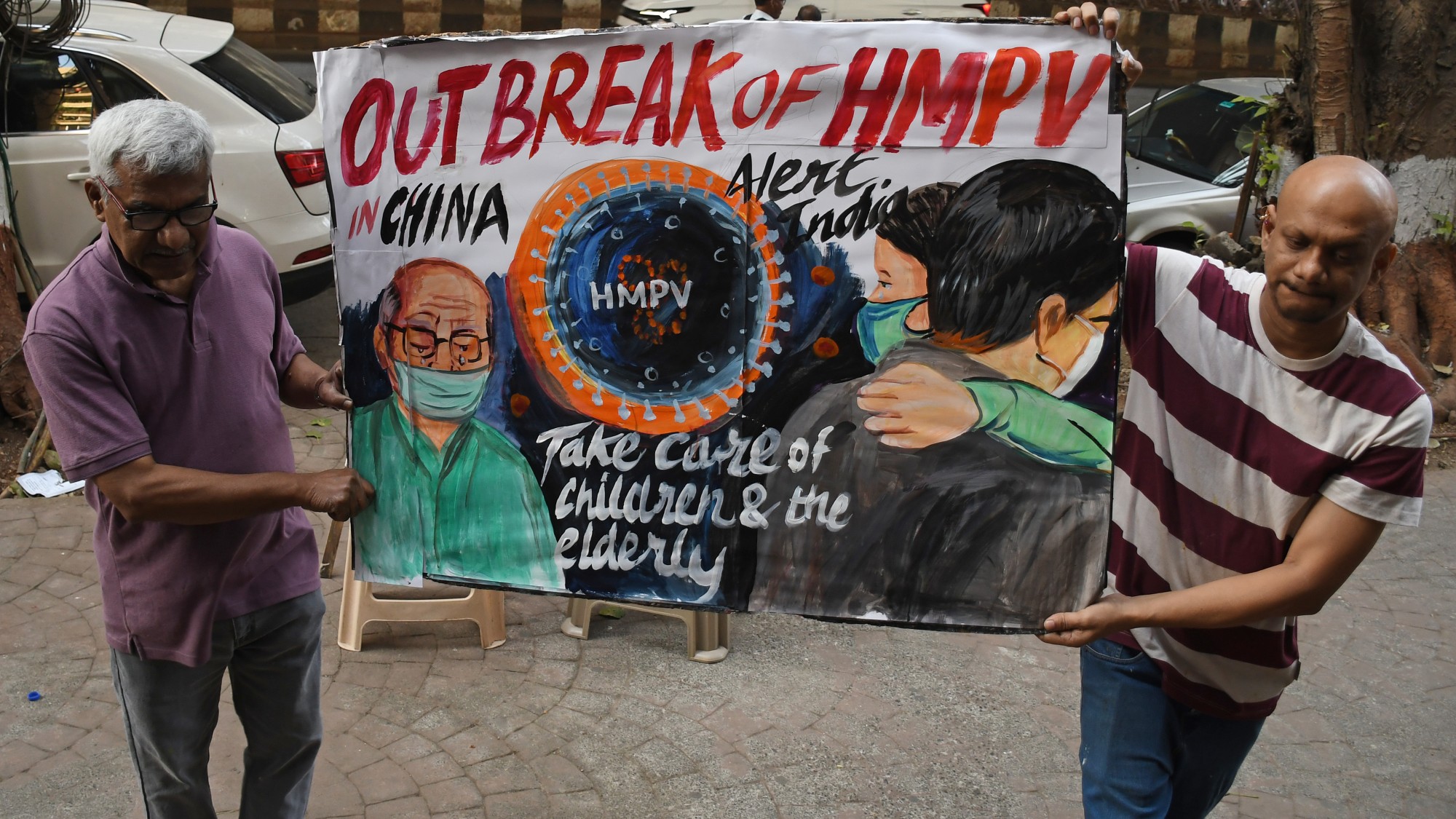How the pandemic ends
New cases, hospitalizations, and deaths are plummeting. What will it take to declare victory over COVID-19?

New cases, hospitalizations, and deaths are plummeting. What will it take to declare victory over COVID-19? Here's everything you need to know:
Is the end near?
Virologists are cautiously optimistic that by late summer, COVID-19 cases and deaths in the U.S. will fall so dramatically that life will return to near normal. Today, 135 million Americans — more than half of all adults — have been fully vaccinated, and in 10 states, 70 percent have received at least one dose. The Centers for Disease Control estimates that 100 million Americans gained some immunity by surviving coronavirus infections (including asymptomatic ones). As a result, the pandemic is already exhibiting "exponential decay." That's a rapid plunge in transmission that occurs when the virus can find few new vulnerable people. New cases are down more than 90 percent from the January peak of 250,000 per day, and are still dropping. Pfizer's and Moderna's vaccines are showing an astonishing real-world effectiveness against serious illness and death of 99 percent, and warm weather is allowing more Americans to spend time outdoors, where transmission is dramatically less likely. By August, average daily COVID deaths, now around 500, may drop below 100 — roughly the same daily toll of the seasonal flu. "Things will look very good this summer," says Christopher Murray, director of the Institute for Health Metrics and Evaluation at the University of Washington. "A lot of people will think that it's all over. But what happens in the fall is the tricky part."
The Week
Escape your echo chamber. Get the facts behind the news, plus analysis from multiple perspectives.

Sign up for The Week's Free Newsletters
From our morning news briefing to a weekly Good News Newsletter, get the best of The Week delivered directly to your inbox.
From our morning news briefing to a weekly Good News Newsletter, get the best of The Week delivered directly to your inbox.
Why is that?
The U.S. has growing regional vaccine disparities, so there's a high risk of COVID flare-ups when the weather turns colder. Fewer than 40 percent of Americans in many Southern states have received at least one shot, compared with 65 to 70 percent of New Englanders. By autumn, kids will return to in-person schooling, many families will hold large indoor gatherings, and immunity developed from previous infections may not provide full protection against variants. There are reports from India and Brazil of people who already had COVID once getting sick again with variants, and the U.K. is having an uptick in cases caused by the Indian strain.
Is herd immunity possible?
It's not likely for the country as a whole. Because the British variant now circulating in the U.S. is estimated to be 60 percent more infectious, most virologists now believe about 80 percent of Americans will need immunity through prior infections or vaccination to achieve classic herd immunity, where transmission stops. Marc Lipsitch, an epidemiologist at the Harvard T.H. Chan School of Public Health, cautions that "disease transmission is local" and may continue in some areas with lower vaccination rates. "If the coverage is 95 percent in the United States as a whole, but 70 percent in some small town, the virus doesn't care," he explained. "It will make its way around the small town."
A free daily email with the biggest news stories of the day – and the best features from TheWeek.com
Do the variants matter?
The Pfizer, Moderna, and Johnson & Johnson vaccines appear to provide robust protection against the known variants, but studies nonetheless suggest they may be 10 to 20 percent less effective. And as the virus continues to rip through much of the world, it can develop new mutations and variants that make vaccines less effective. Less than a quarter of the global population has been infected so far, and many poor countries aren't expected to have widespread access to vaccines until 2023.
Could COVID be eradicated?
Only one infectious disease, smallpox, has ever been eradicated, and that was after two centuries of inoculation and a concerted, 14-year campaign of global vaccination in the 1960s and '70s. SARS-CoV-2, the virus that causes COVID, has proved to mutate rapidly, so epidemiologists say it is hard to predict how long immunity from prior infections and vaccinations will last. Booster shots may be necessary. In a survey by the magazine Nature, nearly 90 percent of immunologists, infectious-disease researchers, and virologists believe the disease will become endemic and circulate in pockets of the global population for the foreseeable future.
What does that mean?
"We're going to defang the virus rather than defeat it," says Lipsitch. That's what happened with the Spanish flu, which evolved from a deadly disease to a normal seasonal flu as human immune systems gained experience fighting it off. There's a good chance COVID-19 will become less lethal over time, since natural selection favors strains of the virus that do not kill their hosts; if infected people are alive and walking around, they can infect more people. Virologists expect COVID-19 to re-emerge among the unvaccinated mostly in winter, but over time to become more like the common cold — causing runny noses, congestion, a run-down feeling. (About 20 percent of colds are caused by four different kinds of coronaviruses that have long been in circulation among humans.) SARS-CoV-2 will likely join a long list of viruses that we just have to live with. "As the old saying goes," said Dr. Ashish K. Jha of Brown University, "pandemics end with a whimper, not with a bang."
The Spanish flu isn't gone
The Spanish flu never really went away. Known as "the mother of all pandemics," the flu killed up to 100 million people worldwide and infected one-third of the global population in a two-year span, but by the 1920s it had lost most of its virulence. Rather than dying out, the original virus mutated into strains that are the direct ancestor of modern flu viruses. "You can still find the genetic traces of the 1918 virus in the seasonal flus that circulate today," says researcher Jeffrey Taubenberger. He led a team of scientists who in the late 1990s obtained the Spanish flu's genetic signature by extracting viral RNA from autopsied lung samples from American soldiers and an Alaskan woman whose body remained preserved in the permafrost. When descendants of the Spanish flu have combined with bird flu or swine flu viruses, creating a new strain, they've caused deadly new pandemics, including in 1957 and 1968 (1 million people worldwide died in each) and in the swine flu pandemic of 2009, which killed 300,000. "We're still living in what I would call the '1918 pandemic era' 102 years later," says Taubenberger, "and I don't know how long it will last."
This article was first published in the latest issue of The Week magazine. If you want to read more like it, you can try six risk-free issues of the magazine here.
-
 Political cartoons for December 14
Political cartoons for December 14Cartoons Sunday's political cartoons include a new White House flag, Venezuela negotiations, and more
-
 Heavenly spectacle in the wilds of Canada
Heavenly spectacle in the wilds of CanadaThe Week Recommends ‘Mind-bending’ outpost for spotting animals – and the northern lights
-
 Facial recognition: a revolution in policing
Facial recognition: a revolution in policingTalking Point All 43 police forces in England and Wales are set to be granted access, with those against calling for increasing safeguards on the technology
-
 Covid-19 mRNA vaccines could help fight cancer
Covid-19 mRNA vaccines could help fight cancerUnder the radar They boost the immune system
-
 The new Stratus Covid strain – and why it’s on the rise
The new Stratus Covid strain – and why it’s on the riseThe Explainer ‘No evidence’ new variant is more dangerous or that vaccines won’t work against it, say UK health experts
-
 RFK Jr. vaccine panel advises restricting MMRV shot
RFK Jr. vaccine panel advises restricting MMRV shotSpeed Read The committee voted to restrict access to a childhood vaccine against chickenpox
-
 RFK Jr. scraps Covid shots for pregnant women, kids
RFK Jr. scraps Covid shots for pregnant women, kidsSpeed Read The Health Secretary announced a policy change without informing CDC officials
-
 New FDA chiefs limit Covid-19 shots to elderly, sick
New FDA chiefs limit Covid-19 shots to elderly, sickspeed read The FDA set stricter approval standards for booster shots
-
 RFK Jr.: A new plan for sabotaging vaccines
RFK Jr.: A new plan for sabotaging vaccinesFeature The Health Secretary announced changes to vaccine testing and asks Americans to 'do your own research'
-
 Five years on: How Covid changed everything
Five years on: How Covid changed everythingFeature We seem to have collectively forgotten Covid’s horrors, but they have completely reshaped politics
-
 HMPV is spreading in China but there's no need to worry
HMPV is spreading in China but there's no need to worryThe Explainer Respiratory illness is common in winter